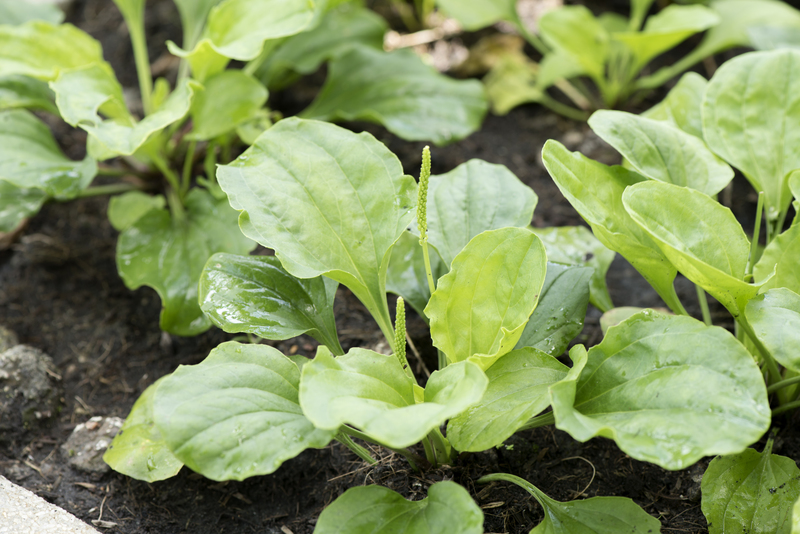Planting the Seeds of Change in the Fight Against Climate
Posted on 30/06/2025
Planting the Seeds of Change in the Fight Against Climate
The climate crisis is one of the defining challenges of our time. As global temperatures rise, extreme weather events become more frequent, and ecosystems face unprecedented threats, the need for effective, sustainable solutions grows more urgent by the day. Among the myriad strategies to mitigate climate change, "planting the seeds of change" is more than a metaphor--it represents actual, practical actions as well as powerful paradigm shifts in how societies interact with the natural world. From reforestation drives to carbon farming, every seed planted today has the potential to shape a healthier planet tomorrow.
Understanding the Impact of Climate Change
Before exploring the different ways we can plant the seeds of change in the fight against climate, it's crucial to grasp the reality of our situation. The earth is warming at an alarming rate, primarily due to human-caused emissions of greenhouse gases, such as carbon dioxide and methane. The consequences are far-reaching:
- Rising sea levels threaten coastal communities worldwide.
- Increased frequency and severity of natural disasters like hurricanes, wildfires, and floods.
- Loss of biodiversity as species struggle to adapt to rapid changes.
- Food and water insecurity stemming from altered rainfall patterns and shifting agricultural zones.
Addressing these challenges requires bold, coordinated action across sectors and nations.

Planting Trees: A Timeless Solution in the Climate Battle
Why Trees Matter for the Climate
Trees have long been recognized as one of the most effective natural carbon sinks. Through photosynthesis, trees absorb carbon dioxide from the atmosphere and lock it away in their trunks, branches, and roots. Forests and reforestation initiatives play a critical role in climate mitigation strategies, offering multiple benefits such as:
- Reducing atmospheric CO2 by sequestering large amounts of carbon.
- Providing habitat for wildlife and preserving biodiversity.
- Stabilizing soil and preventing erosion.
- Supporting local communities with resources and jobs.
According to the Food and Agriculture Organization (FAO), forests absorb a third of the carbon dioxide released from burning fossil fuels each year.
Reforestation: Planting Trees for Climate Resilience
Across the globe, ambitious reforestation projects are planting seeds of change in direct response to climate challenges. Notable efforts include:
- The Trillion Trees Initiative: An international movement aiming to plant, restore, and conserve a trillion trees worldwide, mobilizing governments, businesses, and civil society.
- The Great Green Wall: An African-led project to grow an 8,000km wall of trees across the width of Africa's Sahel region, combating desertification and climate change.
- Urban re-greening programs: Cities are integrating more green spaces to improve air quality, reduce urban heat, and sequester carbon.
Even small-scale community tree-planting events help raise awareness while making a tangible local impact.
Agroforestry: Integrating Agriculture and Forestry to Combat Climate Change
Agroforestry is a sustainable land-use system where trees or shrubs are grown around or among crops and pastureland. This innovative practice is emerging as a key strategy in the fight against climate disruption due to its many advantages:
- Enhanced carbon sequestration compared to conventional farming.
- Improved soil health and water retention.
- Increased biodiversity in agricultural landscapes.
- Economic resilience for farmers through diversified products and income streams.
Adopting agroforestry is a clear example of planting the seeds of change in rural economies, aiding climate mitigation while supporting food security.
Regenerative Agriculture: Healing the Earth While Feeding the World
Another powerful method of planting the seeds of change in the climate fight is the shift to regenerative agriculture. This set of practices focuses on improving soil health, increasing biodiversity, and sequestering carbon through natural processes. Key principles include:
- Minimal soil disturbance with reduced tillage.
- Cover cropping and crop rotation to protect and enrich the soil.
- Integrating livestock for nutrient cycling.
- Composting and organic amendments to boost soil carbon content and fertility.
Research shows that transitioning to regenerative agriculture can significantly reduce greenhouse gas emissions and reverse soil degradation.
The Power of Education: Growing Climate Awareness
Empowering the Next Generation for Climate Action
Planting the seeds of change isn't only about literal planting. Education, training, and public awareness are critical for nurturing climate action:
- Schools and universities integrating climate science and sustainability into their curricula.
- Community campaigns promoting energy efficiency, low-carbon lifestyles, and conservation.
- Youth climate movements inspiring global action and policy change.
By informing and inspiring citizens of all ages, we build a culture of environmental stewardship, empowering more people to become agents of positive transformation.
Knowledge Dissemination and Collaboration
The digital age offers unprecedented opportunities to share success stories, strategies, and scientific breakthroughs. Collaboration between scientists, policymakers, local leaders, and the private sector is vital. Through online webinars, workshops, social media, and accessible content, people everywhere can join the movement for climate action and participate in solutions that plant seeds of change for the planet's future.
Clean Energy: Shifting the Paradigm Away from Fossil Fuels
Transitioning to renewable, clean sources of energy is a core tenet in the fight against climate change. By replacing coal, oil, and natural gas with solar, wind, hydro, and geothermal power, we can drastically reduce greenhouse gas emissions.
- Solar energy installations grow exponentially each year, offering cleaner alternatives for electricity generation.
- Offshore and onshore wind farms supply power to millions, creating green jobs.
- Community microgrids and distributed energy systems foster local resilience and reduce dependence on polluting fuels.
Supporting the global shift to clean energy is another way of planting the seeds of change in the fight against the climate emergency, setting society on a more sustainable path.
Policy & Advocacy: Cultivating Systemic Change
Policy Seeds: Climate-Smart Legislation
Systemic change begins with strong policy. National and international regulations can:
- Limit greenhouse gas emissions through carbon pricing, taxes, and emissions trading systems.
- Protect forests and promote sustainable land use.
- Invest in green technologies and infrastructure.
- Support climate adaptation and disaster resilience plans.
Grassroots advocacy and citizen engagement are essential in pushing leaders to create and enforce effective climate policies.
The Role of Business in Seeding Climate Solutions
More companies are committing to net-zero targets, investing in renewable energy, and adopting circular economy principles. Corporate sustainability programs, supply chain transparency, and green financing are driving innovation in climate mitigation and adaptation. Consumers, investors, and employees increasingly demand that organizations take responsibility for their environmental impact, further planting seeds of change in the corporate sphere.
Community Initiatives: From Local Action to Global Impact
Communities hold immense power to shape the future. From neighborhood garden projects to city-wide waste reduction campaigns, local leaders and volunteers are at the forefront of the climate movement. Benefits of local action include:
- Building climate resilience at the grassroots level.
- Fostering social cohesion and shared purpose.
- Adapting solutions to unique cultural or environmental contexts.
These local initiatives can be scaled and replicated, amplifying their impact worldwide.
Innovation & Technology: Nurturing New Solutions
The fight against climate change requires continual innovation. Advanced technologies--like precision agriculture, carbon capture and storage, plant-based alternatives, and artificial intelligence--are revolutionizing how we approach the problem. Further, research into climate-resilient crops and alternative materials is planting new seeds of change for future generations.
- Remote sensing and data analytics help monitor environmental changes in real time.
- Bioengineering enhances the carbon capture potential of trees and crops.
- Circular economy platforms minimize waste and promote resource efficiency.
Encouraging investment, entrepreneurship, and creativity is crucial for accelerating climate solutions.

The Seeds We Plant Today Determine Tomorrow's Harvest
The phrase "planting the seeds of change" underscores both responsibility and hope. Every action, big or small, can make a difference. By:
- Choosing sustainable products and reducing our carbon footprint,
- Supporting organizations that reforest and restore ecosystems,
- Advocating for science-based climate policies,
- Educating ourselves and others on climate issues, and
- Innovating and investing in green solutions,
we create ripples of positive change that will echo throughout generations. It's time for everyone--governments, businesses, communities, and individuals--to plant those seeds of change in the ongoing fight against climate instability.
Conclusion: Join the Movement--Plant the Seeds of Change
Facing the climate crisis, the need for action cannot be overstated. Yet, the enormous challenges ahead are matched by our potential for collective action and innovation. Whether by planting literal trees, championing clean energy, reshaping policy, or nurturing climate literacy, planting the seeds of change in the fight against climate impacts is within everyone's reach.
Now is the moment to act. The future depends on choices made today. Let us all commit to sowing hope and resilience, together--and watch the world transform as those seeds blossom into a sustainable legacy for generations to come.

